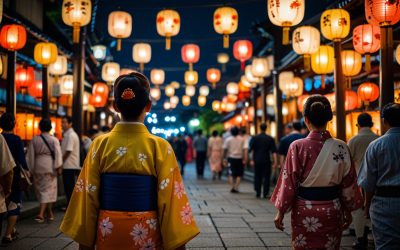Love in Kimono: Dating Traditions During Gion Matsuri

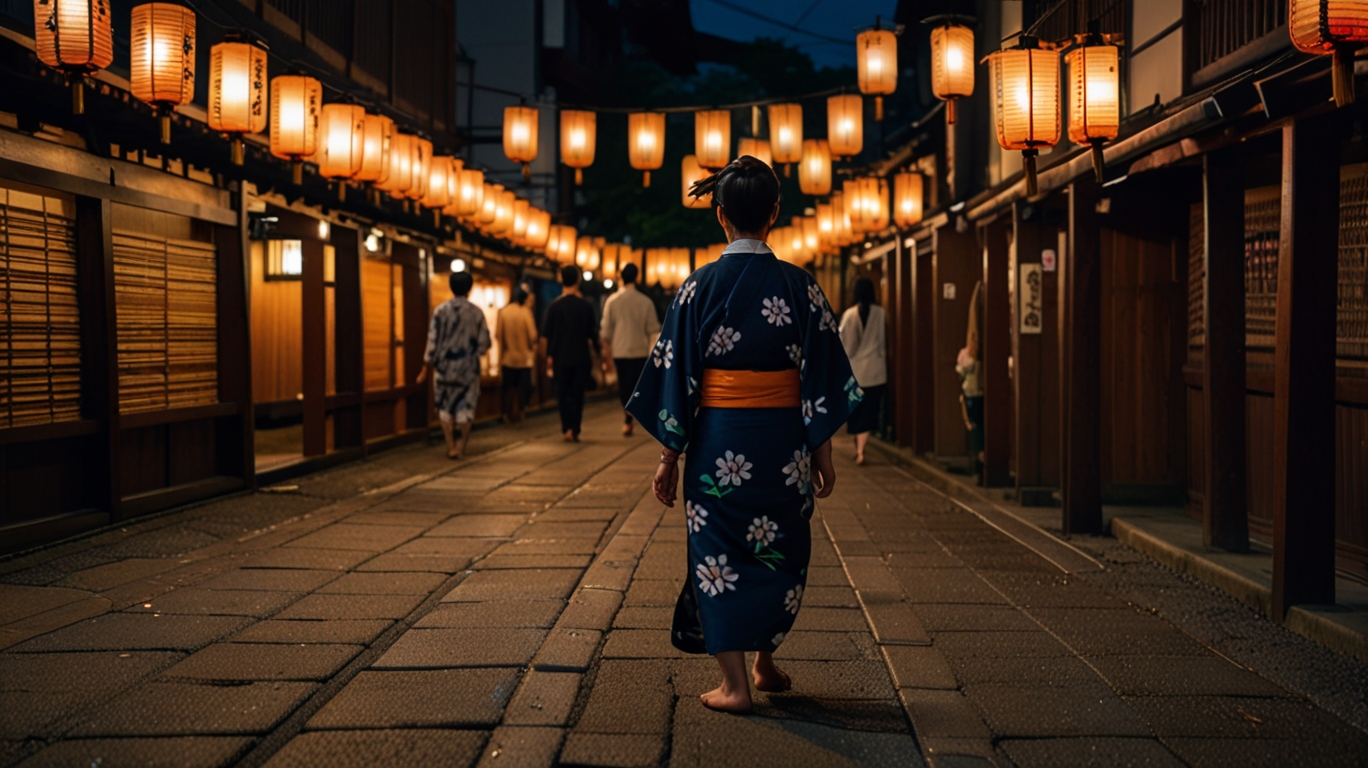
The Gion Matsuri, held every July in Kyoto, is widely regarded as one of Japan’s most iconic and enduring festivals, drawing visitors from across the world who come to witness its grandeur and timeless rituals. Originally established in the 9th century as a Shinto purification ceremony to appease the gods during times of plague and natural disaster, it has since grown into a month-long celebration filled with float processions, parades, musical performances, and community gatherings that symbolize both the resilience and artistry of Kyoto’s people. Yet, while the spectacle of towering floats known as yamaboko is undeniably the centerpiece, there is another dimension to Gion Matsuri that is equally significant, though far more intimate—the role it plays in romance and courtship. For centuries, the festival has provided a rare opportunity for men and women, especially the young, to socialize in ways that were once restricted by tradition. In earlier times, Gion Matsuri evenings allowed discreet exchanges of glances or conversations between unmarried couples under the safety of crowds and lantern-lit streets, creating a socially acceptable space for romance to bloom. Even today, when social norms have evolved, the festival retains this romantic atmosphere, offering couples a unique backdrop where history, spirituality, and love intertwine. The sound of flutes, the sight of glowing lanterns, and the fragrance of summer incense all combine to make Gion Matsuri not only a cultural treasure but also a living stage for love stories passed down through generations.
Kimono and Yukata: Dressing for Love and Elegance
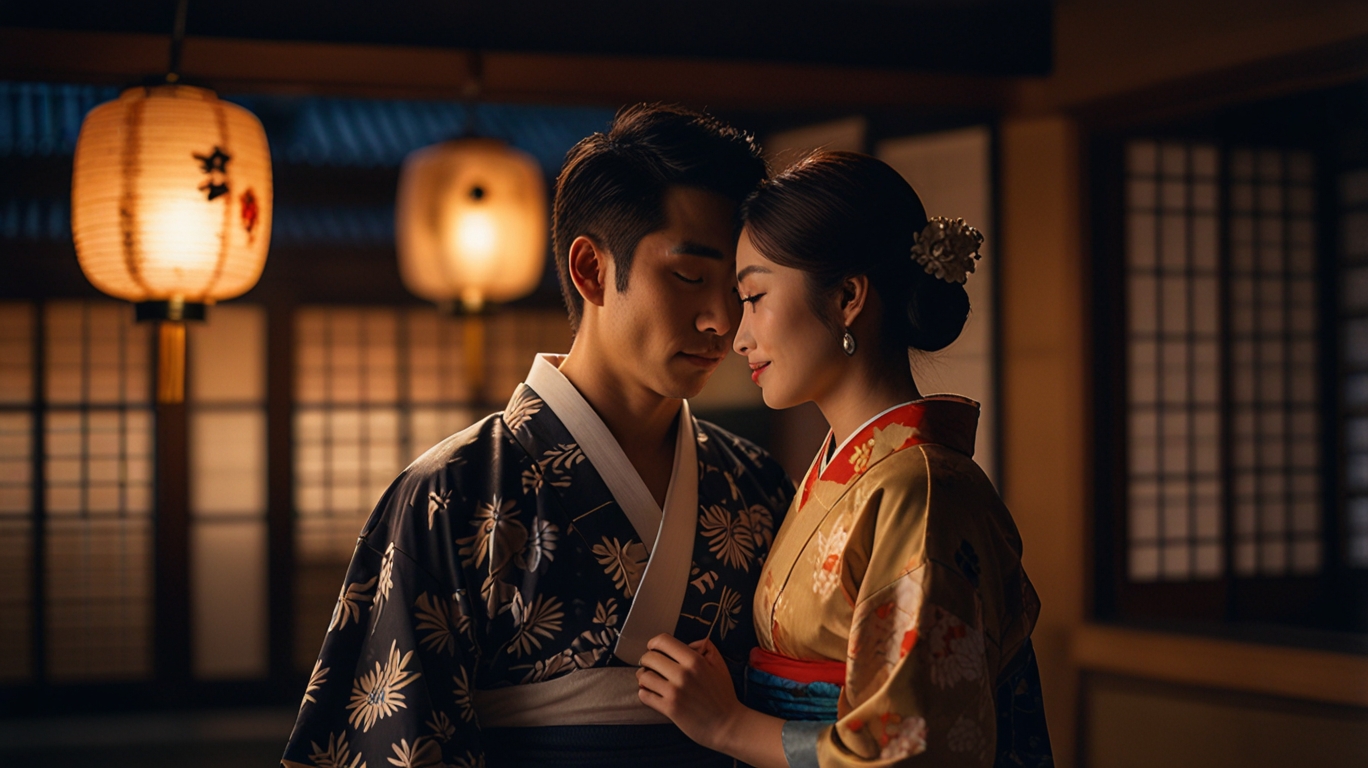
For couples attending Gion Matsuri, wearing traditional attire is not merely a matter of style but a meaningful expression of cultural pride, romance, and seasonal sensitivity. Women often don yukata, the light cotton kimono suited for the humid Japanese summer, adorned with bright floral designs that symbolize vitality, beauty, and youth. Men, by contrast, frequently choose darker, more subdued patterns in shades like navy, grey, or black, reflecting restraint and elegance. Together, these contrasting yet complementary outfits embody the harmony between tradition and individuality. The act of preparing for the festival becomes, in itself, a ritual of intimacy. A boyfriend may help tie the intricate obi (sash) around his partner’s waist, or gently adjust a hairpin decorated with flowers or seasonal motifs, while she might help smooth the collar of his yukata or fix the positioning of his geta sandals. These small gestures, though seemingly practical, often carry deeper meanings of care and affection, reinforcing bonds of trust and companionship. Beyond aesthetics, kimono and yukata also carry symbolic weight during festivals like Gion Matsuri; they link wearers to centuries of cultural continuity, marking them as participants in something larger than themselves. Walking hand-in-hand in these garments through Kyoto’s narrow streets lined with wooden machiya houses and glowing lanterns transforms couples into part of a living artwork—one that blends human affection with the beauty of tradition. It is no exaggeration to say that for many couples, the shared experience of wearing kimono or yukata during Gion Matsuri becomes one of the most treasured memories of their relationship, tying romance directly to culture in ways that transcend time.
Festival Strolls: The Romantic Atmosphere of Yoiyama Nights
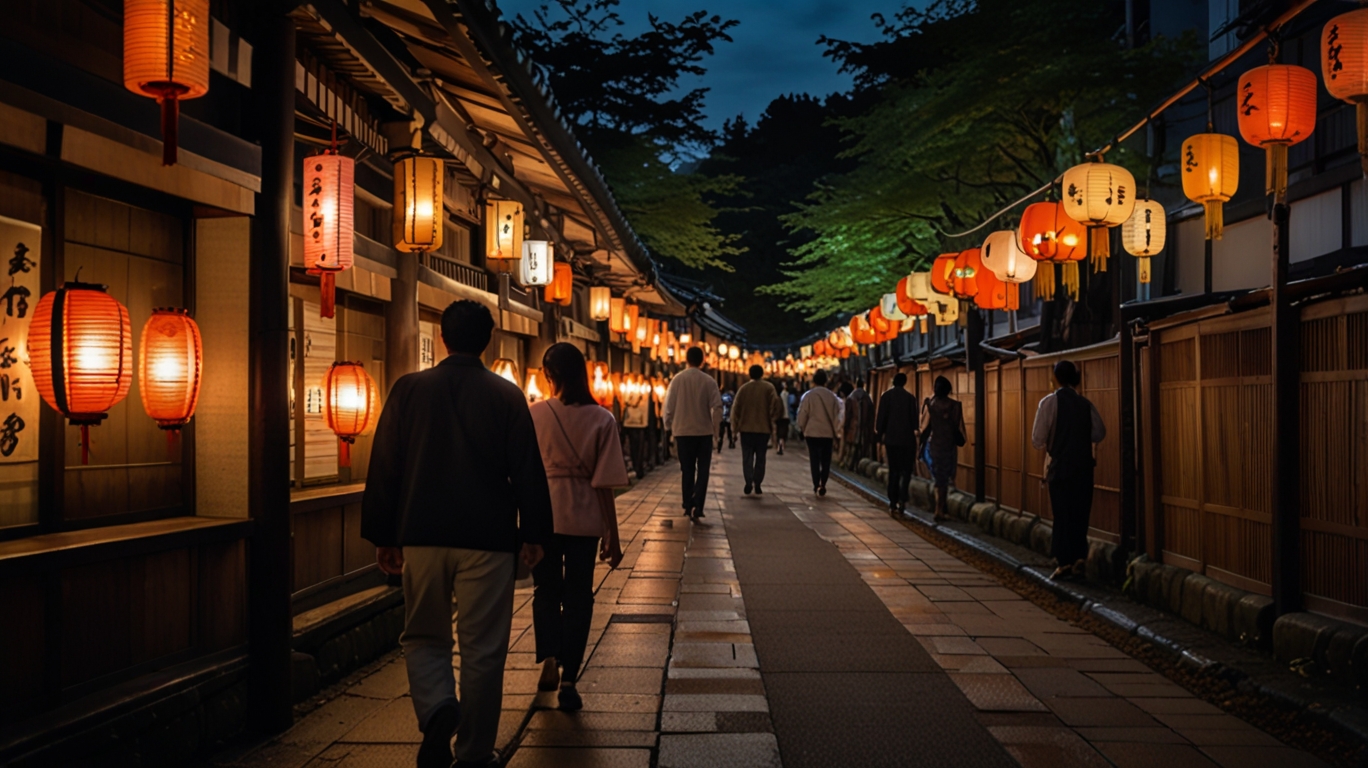
Few experiences capture the romantic spirit of Gion Matsuri as vividly as yoiyama, the nights leading up to the grand float procession. During this period, entire streets in central Kyoto are closed off to vehicles, transforming into pedestrian-only promenades where the air comes alive with music, light, and festival energy. Couples stroll slowly side by side, savoring every detail of the atmosphere around them: the rhythmic chants of festival musicians playing flutes and drums from the floats, the soft glow of lanterns illuminating centuries-old architecture, and the enticing aromas of freshly grilled street food wafting through the evening air. Food stalls, or yatai, line the streets, offering classic festival treats like takoyaki, yakitori, and kakigōri, each purchase becoming a small act of togetherness as couples share bites, laugh over sticky fingers, and cool down from the summer heat. Yoiyama is also a time for exchanging tokens of affection; festival vendors sell handmade fans, colorful hair accessories, and lucky charms, which young couples often gift to one another as symbols of remembrance. The very act of strolling during yoiyama is imbued with romance because of its leisurely pace—there is no rush, only the shared joy of experiencing tradition side by side. The dense crowds paradoxically enhance intimacy, as couples find themselves drawing closer to each other, hands intertwined, navigating lantern-lit paths that seem to shimmer with timeless enchantment. For many young lovers, these walks mark the beginnings of cherished memories, sealing bonds through simple yet profound shared experiences under the glow of Kyoto’s summer sky.
Love and Ritual: Visiting Shrines During the Festival
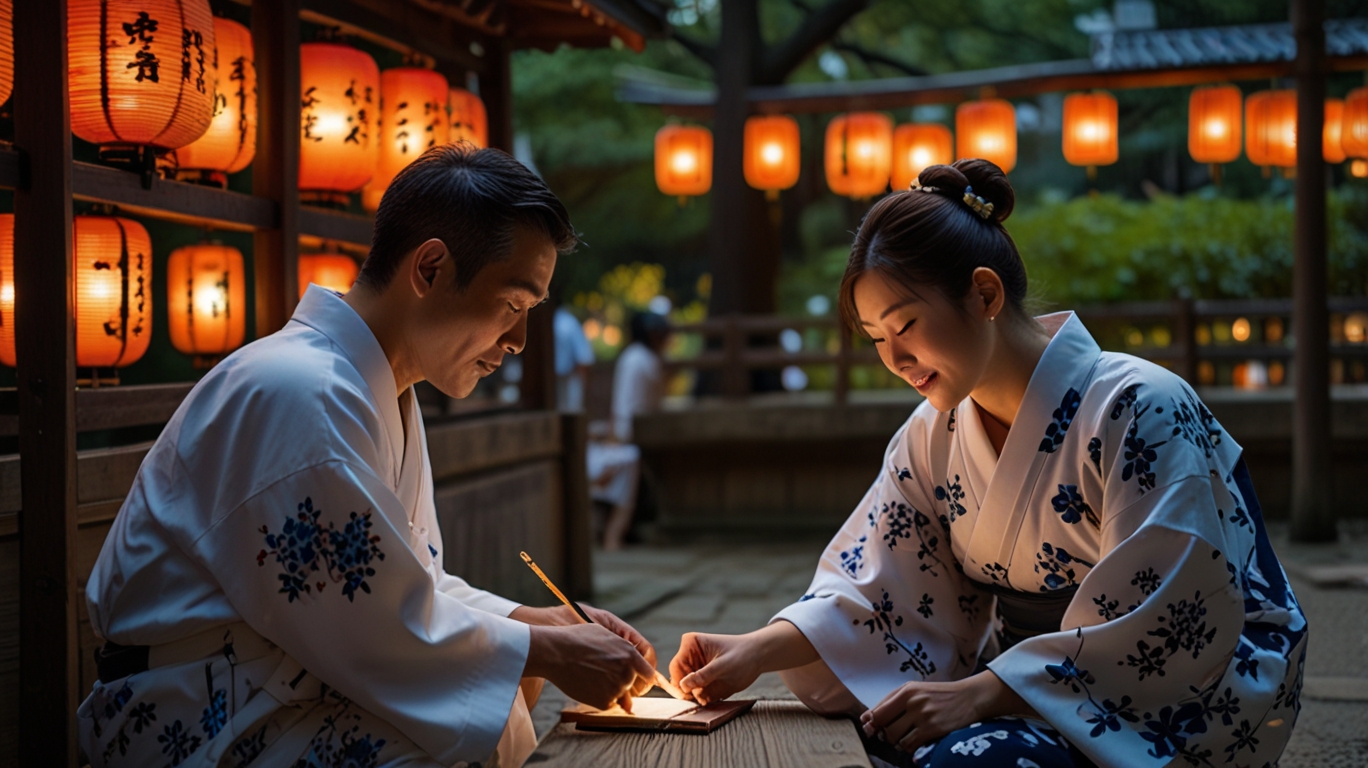
While the processions and street festivities dominate much of Gion Matsuri’s charm, couples also find deeper meaning in visiting shrines together during the celebration, especially Yasaka Shrine, the spiritual heart of the festival. Traditionally, shrine visits during the festival are not just about honoring the gods but also about seeking blessings for personal happiness, love, and future prosperity. Couples often write their wishes on ema—small wooden plaques on which prayers are inscribed—expressing hopes for long-lasting love, successful marriages, or simply the strength to overcome challenges together. Some exchange ema as keepsakes, turning them into tangible reminders of their devotion. Many also participate in drawing omikuji, paper fortunes that offer guidance about love, career, or health. If the fortune predicts happiness in romance, couples may laugh joyfully and keep the slip as a lucky charm, but if it warns of difficulties, they tie it to a designated rack or tree at the shrine, symbolically leaving behind misfortune and starting anew. Beyond these customs, walking through shrine grounds during the quiet moments of the evening often provides couples a sense of peace and spiritual intimacy that contrasts with the bustling festival streets. The warm lantern light reflecting off shrine gates, the sound of distant festival music, and the shared act of prayer all combine to create a uniquely sacred atmosphere for love. For many couples, such rituals transform Gion Matsuri from merely a festive date into a profound experience that ties their relationship to centuries of faith and cultural tradition.
Festival Food and Sweet Gestures
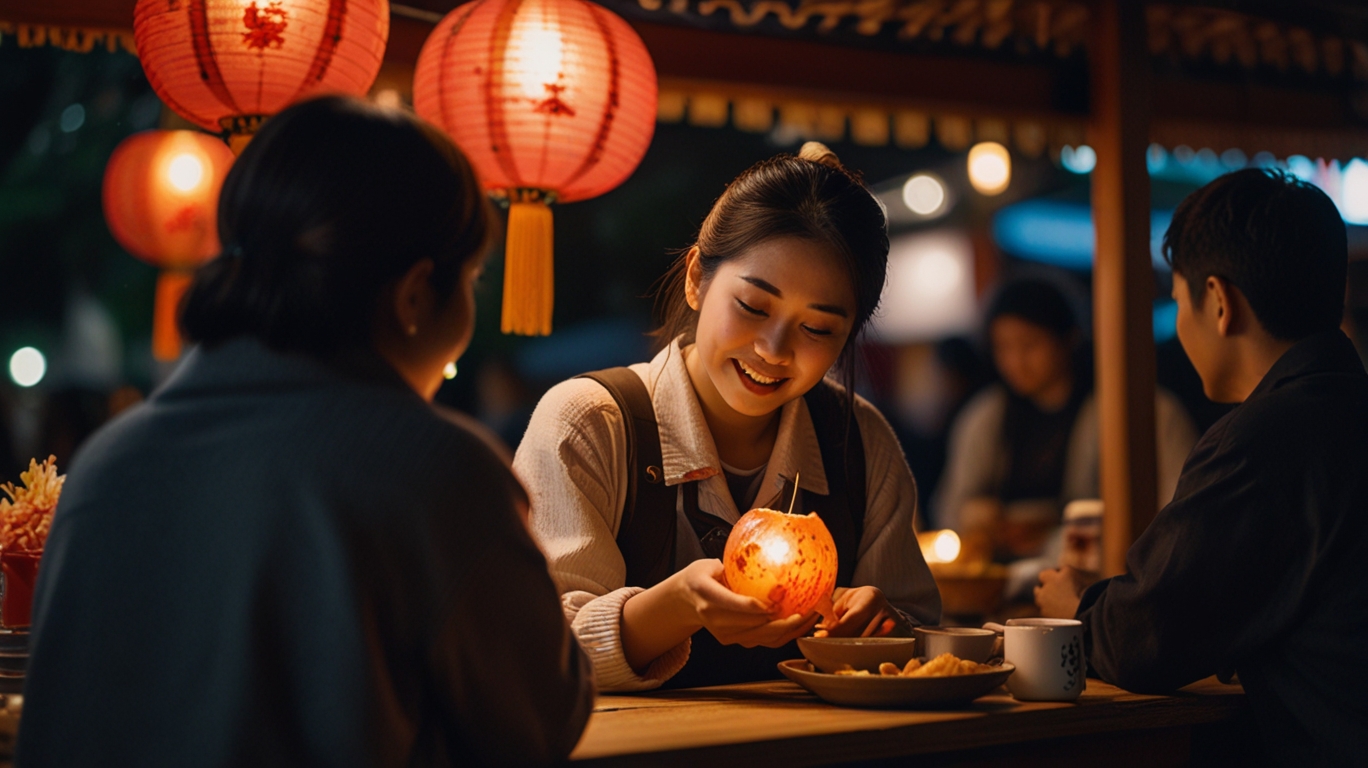
Food has always played an important role in Japanese festivals, and during Gion Matsuri, sharing food becomes one of the most affectionate gestures between couples. Stalls overflowing with vibrant choices line the streets, from grilled squid skewers to piping hot yakisoba noodles, candied apples glistening under the lanterns, and taiyaki filled with sweet red bean paste. For couples, the act of sharing these foods carries symbolic weight: offering a partner the first bite of a candied apple, or cooling them down with a spoonful of kakigōri shaved ice, becomes a playful yet meaningful act of care. These moments, though seemingly lighthearted, often linger in memory because they capture intimacy in its simplest form—nourishing one another both physically and emotionally. Festival-exclusive foods also create unique associations for couples; a certain flavor or snack may forever remind them of their summer spent together at Gion Matsuri. For young people in particular, food-sharing becomes a way to bridge shyness, sparking laughter, and creating natural opportunities for closeness. Couples may also wander between stalls comparing their favorite snacks, turning the exploration itself into a joyful bonding experience. In this sense, food during the festival is not just about sustenance or indulgence but about crafting shared rituals that reinforce affection in subtle, enduring ways.
Modern Dating Traditions in an Ancient Festival
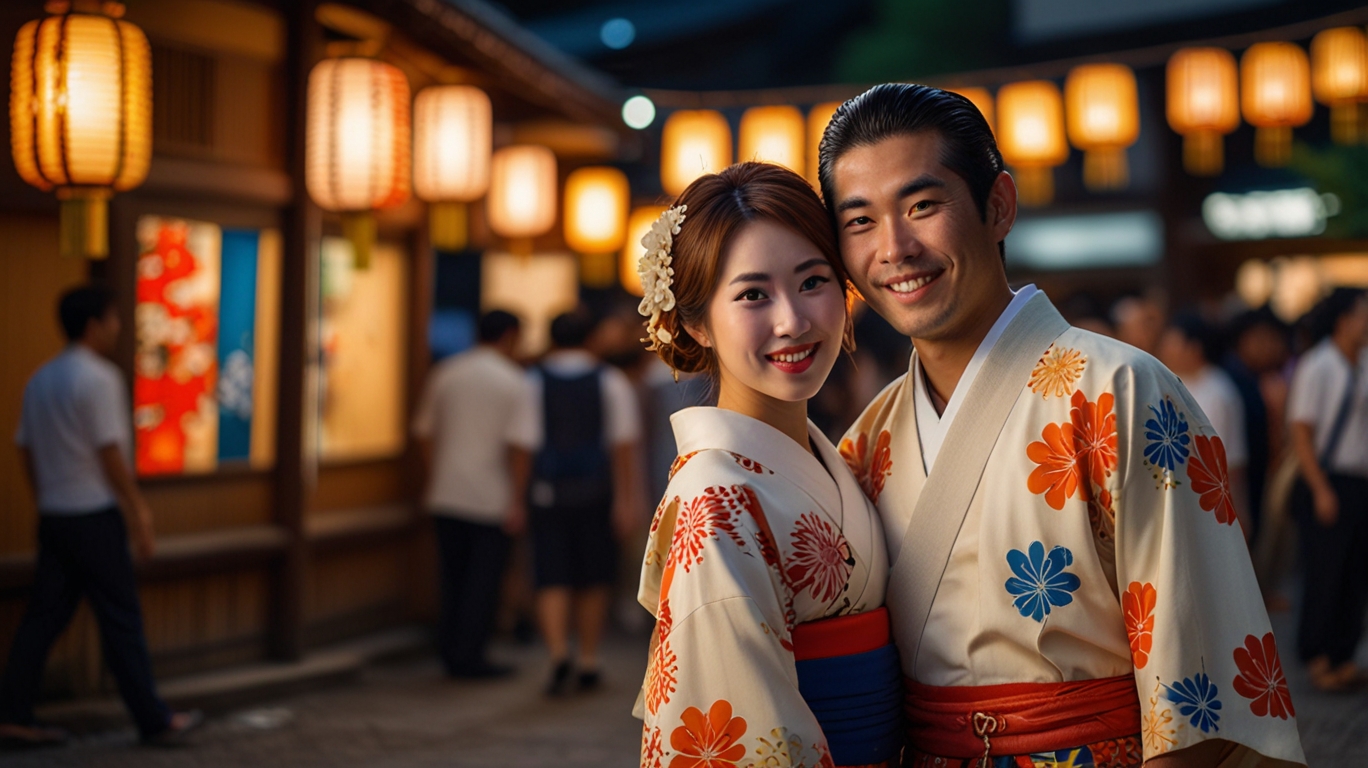
While the heart of Gion Matsuri lies in centuries-old traditions, the way couples engage with the festival has evolved to reflect the modern era. Today, many couples take advantage of the picturesque festival settings to capture photographs in their kimono or yukata, immortalizing their love stories against backdrops of towering floats, glowing lanterns, and Kyoto’s historic wooden townhouses. Social media has become a natural extension of the festival experience, with couples posting curated snapshots of their festival dates, blending heritage with modern digital storytelling. Beyond photography, the exchange of small gifts has become a common tradition; boyfriends may surprise their partners with handmade accessories purchased from local artisans, while girlfriends often give keepsakes like decorative fans or hairpins as tokens of affection. Younger couples in particular view Gion Matsuri as an opportunity to step away from the fast pace of city life, reconnecting in a space where history provides a slower, more reflective rhythm. What makes modern dating at Gion Matsuri so unique is this fusion of the old and the new—the ability to participate in rituals that have existed for centuries while weaving them seamlessly into the language of contemporary love. In this way, the festival continues to evolve while still serving its most timeless function: offering couples a stage to celebrate their bond in the midst of cultural splendor.
The Lasting Memory of Love at Gion Matsuri
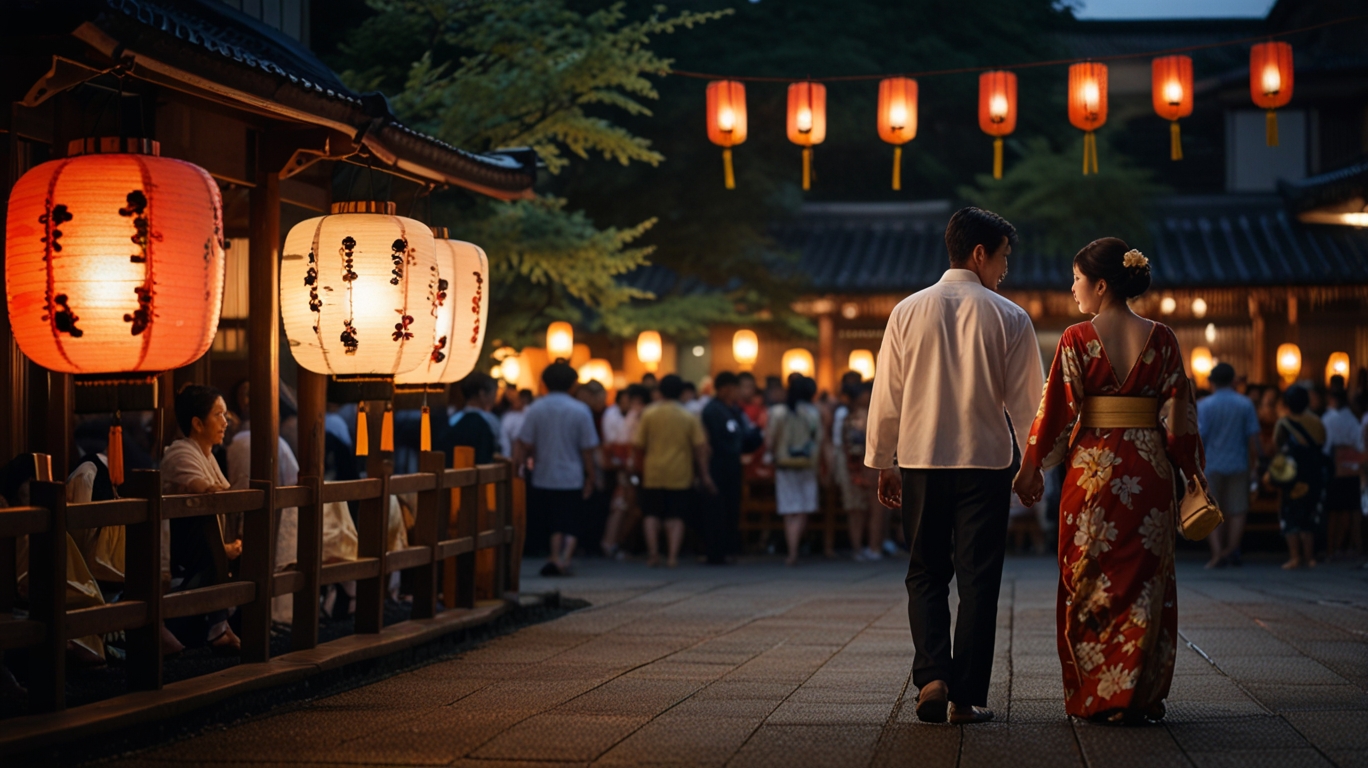
When the lanterns are extinguished, the floats dismantled, and the bustling festival stalls packed away, what lingers most for couples who attended Gion Matsuri together are the memories—memories woven from countless small yet meaningful moments. For some, it is the warmth of walking hand-in-hand beneath rows of lanterns, for others, it is the intimacy of sharing festival sweets or offering prayers together at a shrine. These experiences transcend the fleeting nature of the festival itself, embedding themselves into the personal narratives of love and companionship. Gion Matsuri’s enduring magic lies in its ability to connect individuals not only to centuries of cultural tradition but also to each other in profoundly human ways. Each year, countless couples add their own chapter to this ongoing story, proving that while the rituals and floats may have been born out of ancient necessity, the festival has also become a celebration of love in its many forms. For those who have experienced it, dating during Gion Matsuri often becomes a milestone in their relationship, a memory that resurfaces with every summer, every lantern, and every sound of festival music. In this way, Gion Matsuri continues to embody both heritage and romance, ensuring that the spirit of love in kimono will endure for generations to come.
RELATED POSTS
Gion Matsuri: Japan’s Most Romantic Summer Festival?
Every July, Kyoto becomes the stage for one of Japan’s most enchanting and historically rich celebrations—the Gion Matsuri. Spanning the entire month, this festival is a spectacle of tradition, artistry, and community spirit, with roots reaching back more than a...
